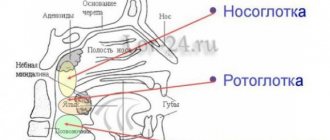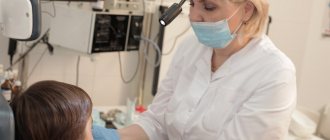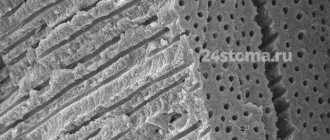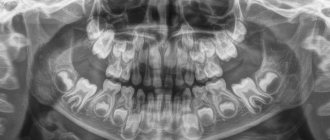An otolaryngologist (ENT) is a doctor who treats diseases of the ear, nose and throat (larynx, trachea, pharynx). To eliminate the risk of complications and progression of ENT diseases into chronic forms, it is important to consult a doctor in a timely manner. At the Istok Health Clinic you can visit a qualified otolaryngologist without referrals or certificates at any time convenient for you.
cost of services
Otolaryngology
| Otolaryngology | |
| Initial appointment with an ENT doctor | 1800 rub. |
| Repeated appointment with an ENT doctor | 1500 rub. |
| Initial appointment with an ENT doctor (candidate of medical sciences) | 2100 rub. |
| Repeated appointment with an ENT doctor (candidate of medical sciences) | 1800 rub. |
| Prof. inspection | 600 rub. |
| General ENT procedures | |
| Applying an ointment bandage to the skin or mucous membrane (one area) | 600 rub. |
| Applying a compress to the ear, behind the ear, or to the side of the neck (one anatomical area) | 600 rub. |
| Washing the postoperative cavity with solutions (single rinse) | 600 rub. |
| Application anesthesia (one anatomical area) | 290 rub. |
| Infiltration anesthesia (local, injection, one injection) | 340 rub. |
| Removal (removal) of sutures after ENT operations | 290 rub. |
| Local ENT manipulations and procedures: pharynx | |
| Irrigation of the posterior pharyngeal wall using an ENT combine | 170 rub. |
| Rinsing the lacunae of the palatine tonsils with a syringe (one tonsil) | 600 rub. |
| Vacuum lavage of the palatine tonsils using the TONZILLOR device | 1150 rub. |
| Removal of a foreign body from the oropharynx | 1150 rub. |
| Lubricating the back wall of the pharynx and palatine tonsils with medicinal solutions | 170 rub. |
| Opening a paratonsillar abscess | 2850 rub. |
| Separating the wound edges after opening the peritonsillar abscess | 1150 rub. |
| Ultrasonic irrigation session of the posterior pharyngeal wall and palatine tonsils (using the “TONSILOR” device) | 600 rub. |
| Shading of the follicles of the posterior pharyngeal wall with a solution of silver nitrate | 290 rub. |
| Removal of pharyngeal papilloma | 1150 rub. |
| Local ENT manipulations and procedures: larynx | |
| Removal of a foreign body from the hypopharynx | 1700 rub. |
| Infusion into the larynx from a syringe | 340 rub. |
| Changing the tracheotomy tube and aseptic dressing | 290 rub. |
| Medicinal irrigation of the larynx using an ENT combine | 170 rub. |
Anatomical structure of the pharynx
The pharynx, another name is the pharynx.
It starts at the back of the mouth and continues down the neck. The wider part is located at the base of the skull for strength. The narrow lower part connects to the larynx. The outer part of the pharynx continues with the outer part of the mouth - it has quite a lot of glands that produce mucus and help moisten the throat during speech or eating. When studying the anatomy of the pharynx, it is important to determine its type, structure, functions and risks of disease. As mentioned earlier, the pharynx is shaped like a cone. The narrowed part merges with the laryngopharynx, and the wide side continues the oral cavity. There are glands that produce mucus and help moisten the throat during communication and eating. From the front side it connects to the larynx, from above it adjoins the nasal cavity, on the sides it adjoins the cavities of the middle ear through the Eustachian canal, and from below it connects with the esophagus.
The larynx is located as follows:
- opposite 4 - 6 cervical vertebrae;
- behind - the laryngeal part of the pharynx;
- in front - formed due to the group of hyoid muscles;
- above - hyoid bone;
- lateral - adjacent to the thyroid gland with its lateral parts.
The structure of a child's pharynx has its own differences. Tonsils in newborns are underdeveloped and do not function at all. Their full development is achieved by two years.
The larynx includes in its structure a skeleton, which contains paired and unpaired cartilages connected by joints, ligaments and muscles:
- unpaired consist of: cricoid, epiglottis, thyroid.
- paired ones consist of: corniculate, arytenoid, wedge-shaped.
The muscles of the larynx are divided into three groups and consist of:
- thyroarytenoid, cricoarytenoid, oblique arytenoid and transverse muscles - those that narrow the glottis;
- posterior cricoarytenoid muscle - is paired and expands the glottis;
- vocal and cricothyroid - strain the vocal cords.
Entrance to the larynx:
- behind the entrance there are arytenoid cartilages, which consist of cornuform tubercles, and are located on the side of the mucous membrane;
- in front - epiglottis;
- on the sides there are aryepiglottic folds, which consist of wedge-shaped tubercles.
The laryngeal cavity is also divided into 3 parts:
- The vestibule tends to stretch from the vestibular folds to the epiglottis.
- Interventricular section - stretches from the inferior ligaments to the superior ligaments of the vestibule.
- Subglottic region - located at the bottom of the glottis, when it expands, the trachea begins.
The larynx has 3 membranes:
- mucous membrane - consists of multinucleated prismatic epithelium;
- fibrocartilaginous membrane - consists of elastic and hyaline cartilages;
- connective tissue - connects part of the larynx and other formations of the neck.
Pharynx: nasopharynx, oropharynx, swallowing department
The anatomy of the pharynx is divided into several sections.
- How is swallowing done?
Each of them has its own specific purpose:
- The nasopharynx is the most important section, which covers and merges with special openings into the back of the nasal cavity. The function of the nasopharynx is to moisturize, warm, clean the inhaled air from pathogenic microflora and recognize odor. The nasopharynx is an integral part of the respiratory tract.
- The oropharynx includes the tonsils and uvula. They border the palate and the hyoid bone and are connected by the tongue. The main function of the oropharynx is to protect the body from infections. It is the tonsils that prevent the penetration of germs and viruses inside. The oropharynx performs a combined action. Without its participation, the functioning of the respiratory and digestive systems is not possible.
- Swallowing department (hyopharynx). The function of the swallowing department is to carry out swallowing movements. The laryngopharynx is related to the digestive system.
There are two types of muscles surrounding the pharynx:
- stylopharyngeal;
- muscles are compressors.
Their functional action is based on pushing food towards the esophagus. The swallowing reflex occurs automatically when muscles tense and relax.
The process looks like this:
- In the oral cavity, food is moistened with saliva and crushed. The resulting lump moves towards the root of the tongue.
- Further, the receptors, irritating them, cause muscle contraction. As a result, the sky rises. At this second, a curtain closes between the pharynx and nasopharynx, which prevents food from entering the nasal passages. The lump of food moves deep into the throat without any problems.
- Chewed food is pushed down the throat.
- Food passes to the esophagus.
Since the pharynx is an integral part of the respiratory and digestive system, it is able to regulate the functions assigned to it. It prevents food from entering the respiratory tract during swallowing.
What functions does the pharynx perform?
The structure of the pharynx makes it possible to carry out serious processes necessary for human existence.
Functions of the pharynx:
- Voice-forming. Cartilage in the pharynx takes control of the movement of the vocal cords. The space between the ligaments is constantly subject to change. This process regulates the volume of the voice. The shorter the vocal cords, the higher the pitch of the sound produced.
- Protective. The tonsils produce immunoglobulin, which prevents a person from becoming infected with viral and antibacterial diseases. At the moment of inhalation, the air entering through the nasopharynx is warmed and cleared of pathogens.
- Respiratory. The air inhaled by a person penetrates the nasopharynx, then the larynx, pharynx, and trachea. The villi located on the surface of the epithelium prevent foreign bodies from entering the respiratory tract.
- Esophageal. The function ensures the functioning of swallowing and sucking reflexes.
The diagram of the pharynx can be seen in the next photo.
- The structure of the human throat and larynx: photo
Diseases affecting the throat and pharynx
Diseases of the ENT organs can be triggered by an attack of a viral or bacterial infection. But pathology is also caused by fungal infections, the development of various tumors, and allergies.
Pharynx diseases manifest themselves:
- ARVI;
- sore throat;
- tonsillitis;
- pharyngitis;
- laryngitis;
- paratonsillitis.
Only a doctor can determine an accurate diagnosis after a thorough examination and based on the results of laboratory tests.
Possible injuries
The pharynx can be injured as a result of internal, external, closed, open, penetrating, blind and through injuries. Possible complication - blood loss, suffocation, development of a retropharyngeal abscess, etc.
First aid:
- in case of injury to the mucous membrane in the oropharynx area, the damaged area is treated with silver nitrate;
- deep injury requires the administration of tetanus toxoid, analgesic, antibiotic;
- severe arterial bleeding is stopped by finger pressure.
Specialized medical care includes tracheostomy and pharyngeal tamponade.
Laryngeal cancer
For laryngeal cancer, combined (sequential) treatment is used: radiation therapy and surgery. There are different treatment methods for patients with laryngeal cancer. There are various treatment methods for treating laryngeal cancer. Some approaches are considered standard of care (treatments that exist today), while others are being studied in clinical trials. Clinical trials are conducted to improve existing therapies or to provide data on the effectiveness of new approaches. If such studies demonstrate superiority of the treatments being studied, they may become the new standard of care. Many patients may want to talk to their doctor about participating in a clinical trial. Some trials are still recruiting treatment-naïve patients.
There are three types of standard therapy: • Radiation therapy Radiation therapy is a method of treating esophageal cancer using high-frequency X-rays or other types of radiation. The method allows you to achieve complete destruction of malignant cells or slow down tumor growth. There are 2 types of radiation therapy. In external beam radiation therapy, beams are directed from a machine near the patient to the tumor. In internal radiation therapy, radioactive substances are drawn up into needles, tubes or catheters that are inserted into tissue near the tumor or directly into the tumor. The choice of radiation therapy method depends on the type and stage of the malignant process.
The effectiveness of radiation therapy increases if the patient quits smoking before starting treatment. External radiation to the thyroid or pineal gland area can affect organ function. To ensure the normal functioning of the thyroid gland, a complete examination should be carried out before and after treatment. • Surgical method Surgery (surgical removal of the tumor) is the main method of treatment for all stages of laryngeal cancer. The following types of surgical interventions are performed: • Chordectomy: surgical removal of only the vocal cords. • Supraglottic laryngectomy: Surgical removal of the epiglottis. • Hemilaryngectomy: Surgical removal of half of the larynx (voice box). With hemilaryngectomy, voice preservation is possible. • Partial laryngectomy: surgical removal of part of the larynx (voice box). With partial laryngectomy, it is possible to preserve the patient's speech. • Total laryngectomy: surgical removal of the entire larynx. When performing this operation, a hole is made on the front surface of the patient's neck to allow breathing. This procedure is called a tracheostomy. • Thyroidectomy: Removal of all or part of the thyroid gland. • Laser surgery: A surgical procedure in which a laser beam (a narrow, high-frequency beam of light) used instead of a knife is used to make bloodless cuts in tissue or remove surface tumors.
Even if the doctor completely removes the tumor he sees during surgery, some patients undergo postoperative chemotherapy and radiation therapy to completely destroy any remaining tumor cells. Treatment carried out after surgery is called adjuvant. • Chemotherapy Chemotherapy is a method of treating cancer using cytostatic drugs, the action of which is aimed at destroying tumor cells or slowing down malignant growth. When chemotherapy drugs are taken orally, administered intravenously or intramuscularly, the medicine enters the general bloodstream, destroying tumor cells circulating throughout the body (systemic chemotherapy). When chemotherapy is injected directly into the spinal canal, into an affected organ, or into a body cavity such as the abdominal cavity, it is called regional chemotherapy.
Chemotherapy is given before surgery or radiation therapy to shrink the tumor. This type of radiation therapy is called neoadjuvant. Clinical trials continue to search for new treatment methods. Information about these studies can be obtained from the NCI (National Cancer Institute, USA) website or from your doctor, with whom you can also discuss participation in such studies.
• Chemoprevention Chemoprevention is based on the use of medications, vitamins or other substances that reduce the risk of developing cancer or the likelihood of its recurrence (recurrence). To prevent the development of secondary tumors in patients who have had cancer in the head and neck area, a drug called isotretinoin is being studied. • Radiosensitizers Radiosensitizers are drugs that increase the sensitivity of the tumor to radiation therapy. The combination of radiation therapy and radiosensitizers makes it possible to destroy a larger number of malignant cells.
Patients can ask their doctor about participating in clinical trials.
For some patients, participation in clinical trials may be the best treatment option. Clinical trials are part of the cancer research process. They are conducted to determine whether new tumor treatments are effective and safe, and how they are superior to standard approaches to therapy.
Most of today's standards of treatment for malignancies are based on previous clinical trials. Patients participating in studies may receive standard therapy or be among the first to receive a new treatment.
Patients participating in clinical trials also influence future improvements in cancer treatments. Even if a clinical trial does not lead to the discovery of new effective methods of combating a disease, very often the results obtained can provide answers to critical questions and help in further studying the problem. You can take part in clinical trials before, during or after anticancer treatment.
Some studies recruit patients without prior therapy. Other trials are studying the drug's effect in patients who have not responded to previous treatment. There are also studies of new methods of preventing relapses (recurrences) of the disease or reducing the side effects of the drug.
After completion of treatment, the patient must be observed by a doctor.
After treatment, in order to assess the effectiveness of treatment, it may be necessary to repeat some diagnostic procedures performed previously to establish a diagnosis or stage of the process. Based on the results obtained, a decision is made to continue, change or terminate treatment. This procedure is called restaging.
Some tests will need to be repeated regularly even after treatment is completed. Data from such examinations help assess the patient’s condition and detect relapse (recurrence) of the disease in time. This process is called dispensary
Anatomy of cartilage
When studying the structure of the larynx, special attention should be paid to the cartilage present.
They are presented as:
- Cricoid cartilage. This is a wide plate in the form of a ring, covering the back, front and sides. On the sides and edges, the cartilage has articular areas for connection with the thyroid and arytenoid cartilages.
- Thyroid cartilage, consisting of 2 plates that fuse in front at an angle. When studying the structure of a child’s larynx, these plates can be seen to converge in a rounded manner. This happens in women too, but in men it usually develops an angular protrusion.
- Arytenoid cartilages. They have the shape of pyramids, at the base of which there are 2 processes. The first, the anterior one, is the place for fastening the vocal cord, and the second, the lateral cartilage, is where the muscles are attached.
- Horn-shaped cartilages, which are located on the tops of the arytenoids.
- Epiglottic cartilage. It has a leaf-shaped form. The convex - concave surface is lined with mucous membrane, and it faces the larynx. The lower part of the cartilage extends into the laryngeal cavity. The front side faces the tongue.
What is the throat, larynx and pharynx
A common misconception is to call the throat only the small area behind the tongue that turns red and hurts with sore throats. In this case, what is located below is often excluded. For example, there is a difference between the throat and larynx because it is part of this system below and is connected to the pharynx and trachea.
- Sore throat and fever, weakness in the body - what could it be? What to drink for these symptoms
The throat is not an anatomy term; it is the common name for the part of the upper respiratory tract from the hyoid bone to the level of the clavicle or manubrium of the sternum. The throat contains:
- pharynx or oropharynx - begins in the visible part of the mouth, the entrance gates are the tonsils, they are also tonsils that do not allow infections below;
- nasopharynx - cavities located above the palate;
- swallowing department - a small area behind the epiglottis that pushes food and liquids into the esophagus;
- The larynx is a cartilaginous tube for air, lined with mucous membrane and blood vessels.
Important to know: How to treat laryngeal paresis? We understand the aspects of the disease.
The epiglottis serves as a valve that prevents food and water from entering the larynx, at the top of which are the vocal folds (cords). Their closing and opening gives us the opportunity to make sounds. The larynx is protected in front by the thyroid cartilage, and behind it is the esophagus.
Functions of the larynx
It is customary to distinguish four main functions of the larynx: respiratory, protective, phonatory (voice-forming) and speech.
- Respiratory. When you inhale, air from the nasal cavity enters the pharynx, from it into the larynx, then into the trachea, bronchi and lungs. When you exhale, air from the lungs travels all the way through the respiratory tract in the opposite direction.
- Protective. The movements of the cilia covering the mucous membrane of the larynx continuously clean it, removing the smallest particles of dust that enter the respiratory tract. Dust surrounded by mucus is released as phlegm. Reflex cough is an important protective device of the larynx.
- Lamp room. The occurrence of sound is associated with vibration of the vocal cords during exhalation. The sound may vary depending on the tension of the ligaments and the width of the glottis. A person consciously regulates this process.
- Speech. It should be emphasized that only the formation of sound occurs in the larynx; articulate speech occurs when the organs of the oral cavity work: the tongue, lips, teeth, facial and masticatory muscles.
Possible diseases
Diseases of the nasal cavity are divided into four categories.
Allergic. Symptoms of such diseases manifest themselves through redness and sore throat, lacrimation, itching, and nasal discharge.
Inflammatory. With such diseases of the nasopharynx, general intoxication of the body is most often observed:
- chills,
- apathy,
- febrility,
- appetite and sleep disturbances.
And with tonsillitis - an increase in the size of the nasopharyngeal tonsils.
Traumatic. This category includes diseases characterized by bleeding, bone crepitus, sharp pain, redness and swelling of the affected area.
Oncological. Symptoms characteristic of this group of diseases include the presence of a malignant neoplasm, difficulty swallowing or breathing, a decrease in body weight by 7–10 kg over a month, general weakness of the body, an increase in the size of lymphatic formations, persistent low-grade fever for more than half a month.
Most of the causes of nasopharyngeal diseases can be corrected with medication or by leading a healthy lifestyle. However, a predisposing factor in the occurrence of oncological and allergic pathologies of this organ is burdened heredity, which in no way can be neutralized.
More dangerous pathologies
Any diseases of the nasopharynx are under the supervision of an otolaryngologist. The most common and dangerous pathologies are:
- Sore throat and complications caused by it (inflammation of the tonsils).
- Abscess is a purulent inflammation of the tonsils (a complication of tonsillitis).
- Pharyngitis is an inflammation of the mucous membrane of the pharynx.
- Adenoid vegetation - an increase in the size of the nasopharyngeal tonsils. With this pathology, breathing through the nose is completely impaired.
- Laryngitis is an acute inflammation of the mucous membrane of the larynx.
You can protect yourself from diseases of this organ by taking the following preventive measures:
- Rational and proper nutrition.
- Consumption of mineral and vitamin complexes.
- A healthy lifestyle is partly sports and physical exercise.
- Daily ventilation of living spaces.
Diseases, pathologies, injuries of the throat and larynx: description
Diseases of the larynx
In order to promptly begin treatment for a particular problem associated with the pharynx, larynx or trachea, it is necessary to correctly recognize the symptoms. Only a doctor can do this. Let us highlight 4 main acute inflammatory diseases of this part of the body:
Acute catarrhal laryngitis - inflammation of the mucous membrane of the larynx:
- Occurs as a result of pathogenic bacteria entering the mucous membrane , as well as under the influence of exogenous and endogenous factors: hypothermia, eating too cold or hot food, prolonged conversation in the cold and other irritations of the mucous membrane. more about this disease in the article at this link .
- The first symptoms are a hoarse voice, soreness, an unpleasant feeling in the throat, and a dry cough.
- If the disease is not treated , various changes in the blood may occur, small cell infiltration appears, and the mucous membrane becomes saturated with serous fluid.
- Diagnosis of the disease is simple - visual examination. The doctor makes a diagnosis based on the symptoms: acute hoarseness, severe swelling of the mucous membrane, incomplete closure of the vocal folds. The disease can become chronic. Erysipelas of the mucous membrane also occurs, which can simultaneously occur with a disease of the facial skin.
- Treatment - if treatment is started in a timely manner and it is correct, then the disease will go away within 10 days. If the disease lasts more than 3 weeks, then there is a high probability that the disease will become chronic. It is important to remain silent during treatment until the symptoms begin to subside. Read the article at this link on how to treat laryngitis in children.
Laryngeal
sore throat is an acute infectious disease that affects lymphadenoid tissue:
- Etiology - inflammation is caused by bacterial, fungal and viral flora. It also occurs from hypothermia or injury. The pathogen penetrates the mucous membrane through airborne droplets or alimentary routes. In the article at this link you will learn everything about sore throat in children.
- Symptoms include a sore throat that gets worse with swallowing and turning the neck. Difficulty breathing, increased temperature - up to 39 degrees, and increased heart rate may appear. Upon palpation, enlarged lymph nodes of the throat are felt.
- Diagnosis - the clinical picture allows you to visually recognize the disease upon examination. But if such a sore throat is suspected, diphtheria, which has the same course, should be excluded.
- Treatment - antibacterial drugs, antihistamines, mucolic and analgesic drugs are prescribed. If stenosis occurs, then an emergency tracheotomy is prescribed. Read in the article at this link on our website how you can cure a sore throat with the help of rinses.
Laryngeal edema
Laryngeal edema is a rapidly developing vasomotor-allergic edematous process in the mucous membrane:
- Etiology - often manifests itself as a consequence after the manifestation of some disease: inflammation of the larynx, infections, tumors, injuries, allergies, various pathologies.
- Clinical picture - the lumen of the larynx and trachea narrows due to spasm, foreign body entry, and infections. Moreover, the faster stenosis develops, the greater the danger it poses to health. Read the article on our website about how sore throat in children can cause swelling of the larynx and what needs to be done after that.
- Diagnosis - the laryngoscopic picture helps to make the correct diagnosis. But it is important that the doctor finds out why the swelling appears. After all, the edematous membrane can cover an existing tumor or foreign body. Therefore, the doctor usually prescribes bronchoscopy, x-rays and other studies.
- Treatment - medications are prescribed that will help cope with bacteria: broad-spectrum antibiotics. It is important to restore external breathing during treatment. If drug treatment does not help, then a tracheostomy is performed. This procedure is necessarily prescribed for decompensated stenosis. You also need to limit fluid intake, try not to talk a lot and limit physical activity.
Acute tracheitis
Acute tracheitis is an inflammatory process of the mucous membrane in the lower respiratory tract:
- The causes are pathogenic bacteria that enter the body and, against the background of reduced immunity, begin to progress. In winter, immunity weakens, especially when hypothermia occurs or during viral infections, occupational hazards, and so on.
- The clinical picture is a paroxysmal cough with the discharge of purulent sputum, swelling of the mucous membrane, dilation of blood vessels on the mucous membrane. Fever, weakness, poor health, hoarseness - all these are the first signs of tracheitis.
- Treatment - expectorants, antihistamines, and medications to reduce fever are prescribed. If the temperature does not go away and rises within 3-4 days, then antibiotics are prescribed. The article at this link describes how tracheitis can be cured using mustard plasters.
- Prognosis - if treated correctly, the disease goes away within 2-3 weeks. If treatment is incorrect, then the disease can develop into a chronic form. Complications such as pneumonia or bronchopneumonia may also occur.
There are many diseases of the pharynx, larynx and trachea. Only a doctor can recognize and make the correct diagnosis. Do not self-medicate, as this can lead to undesirable consequences and complications. Here is another list of common throat diseases:
Diseases of the larynx
A sore throat can also appear as a result of a concomitant disease. Here are the problems that lead to sore throat:
Problems that cause sore throat
The throat is the most complex part of the body. From the outside of this part of the body there are many blood vessels and nerves. All parts are important, both individually and together. Breathing, swallowing, eating - all these processes require an organ such as the throat, consisting of the pharynx, larynx and trachea.
Anatomical structure of the larynx
The larynx (larynx) is lined with various tissue structures, blood and lymphatic vessels, and nerves. The mucous membrane, covered from the inside, consists of multilayered epithelium. And underneath there is connective tissue, which in case of illness manifests itself as swelling. When studying the structure of the throat and larynx, we observe a large number of glands. They are absent only in the region of the edges of the vocal folds.
See the photo below for the structure of the human throat with a description.
The larynx is located in the throat in the shape of an hourglass. The structure of the larynx in a child differs from that of an adult. In infancy, she is two vertebrae higher than normal. If in adults the plates of the thyroid cartilage are connected at an acute angle, then in children they are at a right angle. The structure of the larynx in a child is also distinguished by a long glottis. In them it is shorter, and the vocal folds are of unequal size. The diagram of a child’s larynx can be seen in the photo below.
What does the larynx consist of?
The structure of the larynx in relation to other organs:
- superiorly, the larynx is attached to the hyoid bone by thyroid ligaments. This provides support for the external muscles;
- below, the larynx is attached to the first ring of the trachea with the help of the cricoid cartilage;
- on the side it borders on the thyroid gland, and on the back on the esophagus.
The skeleton of the larynx includes five main cartilages that fit tightly together:
- cricoid;
- thyroid;
- epiglottis;
- arytenoid cartilages - 2 pieces.
From above the larynx passes into the laryngopharynx, from below into the trachea. All cartilages found in the larynx, except the epiglottis, are hyaline, and the muscles are striated. They have the property of reflex contraction.
What functions does the larynx perform?
The functions of the larynx are determined by three actions:
- Protective. It does not allow third-party objects into the lungs.
- Respiratory. The structure of the larynx helps regulate air flow.
- Voice. The vibrations caused by the air are created by the voice.
The larynx is one of the important organs. If its functional activity is disrupted, irreversible consequences may occur.











